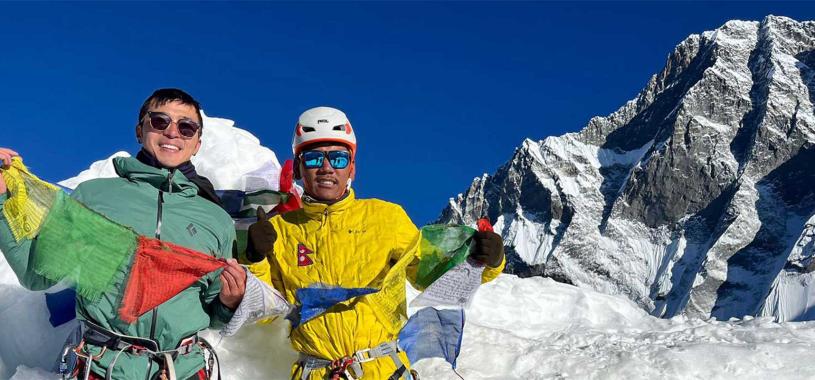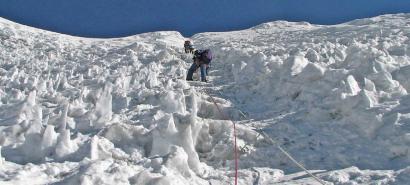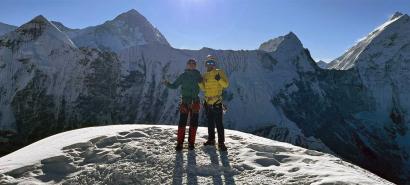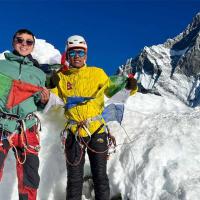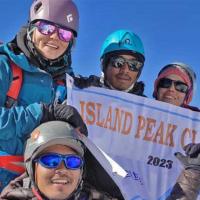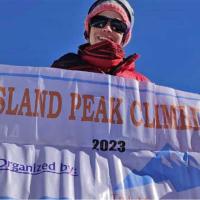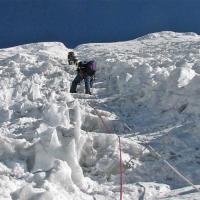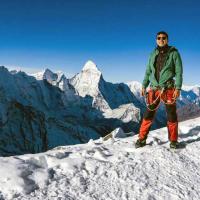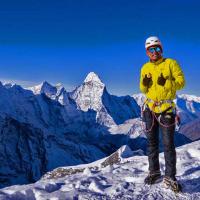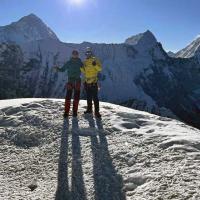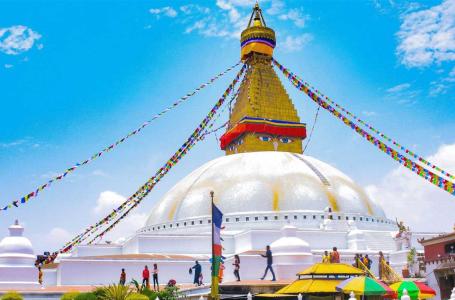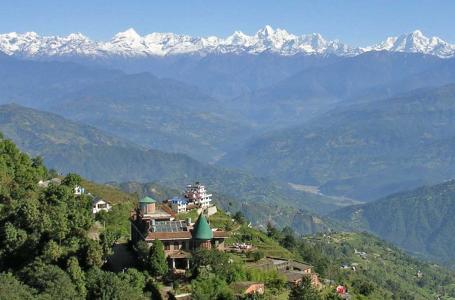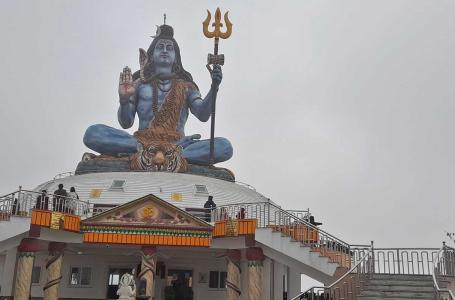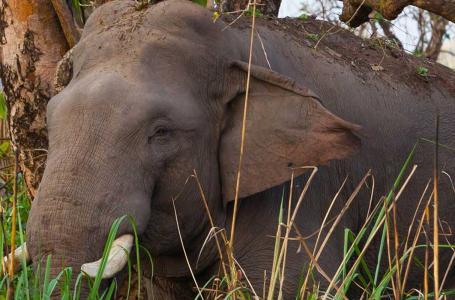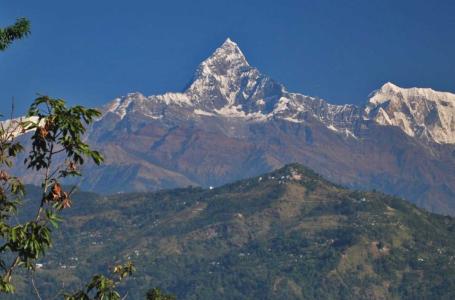- 01 Pax USD 850 pp
- 02 to 05 Pax USD 800 pp
- 06 to 10 Pax USD 750 pp
- 11 to 15Pax USD 676 pp
Itinerary
Your adventure begins as you arrive in the picturesque village of Chhukung, known for its stunning views and as the starting point for Island Peak climbing. After settling in, embark on a thrilling trek towards the Island Peak Base Camp, situated at an elevation of 5087 meters.
Traverse through diverse landscapes, including lush forests, glacial moraines, and rocky terrain, while soaking in the breathtaking vistas of the surrounding Himalayan peaks. Arrive at the Island Peak Base Camp, where you will set up camp for the night, nestled amidst the towering mountains.
Today is dedicated to preparing for the summit ascent. Engage in a comprehensive climbing clinic course conducted by experienced guides. Learn essential mountaineering skills, including rope techniques, ice axe handling, crampon usage, and safety procedures. Take ample rest and acclimatize to the high altitude conditions at the Base Camp, ensuring optimal physical readiness for the challenging climb ahead.
Rise early before dawn to begin the exhilarating ascent towards the summit of Island Peak, standing at an impressive height of 6189 meters. Navigate through glacier moraines and steep sections, equipped with necessary climbing gear and under the guidance of expert Sherpa climbers. Witness the awe-inspiring sunrise painting the surrounding peaks with hues of gold and pink as you make your way toward the summit.
Reach the summit of Island Peak, where you'll be rewarded with panoramic views of Everest, Lhotse, Nuptse, Makalu, and other towering peaks. Descend carefully back to the Base Camp, relishing the sense of accomplishment and the memories of conquering the peak. Spend the night at the Base Camp, celebrating the successful summit and cherishing the camaraderie forged during the expedition.
Enjoy a hearty breakfast amidst the tranquil mountain surroundings, reflecting on the incredible journey and achievements attained. Bid farewell to the Himalayas as you prepare to conclude your Island Peak climbing adventure.
Depart from the Base Camp and trek back to Chhukung, retracing your steps through the mesmerizing landscapes of the Everest region. Your Island Peak Climbing expedition officially concludes upon reaching Chhukung, where you'll bid farewell to your guides and fellow trekkers.
Overview
Island Peak, also known as Imja Tse, is a well-known hiking peak in Nepal's Everest area. It has an elevation of 6,189 meters (20,305 feet) and is popular with hikers and climbers. Chukung is a tiny settlement in the Everest area that serves as the beginning point for several treks, including the Island Peak climb. Trekkers and climbers often ascend from Chukung to Island Peak Base Camp, located at the mountain's base. Technical aspects of the climb include steep slopes and fixed ropes.
Prior expertise with climbing equipment such as crampons, ice axes, and ropes is typically required, and some climbers choose to employ local guides or join guided trips. The climb is difficult but rewarding, with breathtaking vistas of the neighboring Himalayan peaks such as Lhotse, Nuptse, and Everest. The path from Chukung to Island Mountain combines hiking and climbing and is ideal for experienced trekkers or those looking to tackle a fairly difficult mountain in the Everest region.
Planning Island Peak from Chhukung:
Complete planning is required when preparing for a hike to Island Peak from Chukung. Begin by studying the trekking route and any permissions required. Hiring a local guide or joining a guided trip is strongly advised because solo travel is prohibited in Nepal for safety concerns. You may get a guide from genuine travel firms in Nepal, which will also assist you in organizing your trip. Permits and TIMS are required.
Acclimatization should be prioritized with strategically scheduled rest days at higher elevations, but emergency protocols and evacuation routes should be understood. Select the optimum trekking season and maintain physical fitness with targeted training that takes into account both cardiovascular endurance and strength. Trekking equipment is required, so you may either buy or rent basic climbing gear and clothes for varied weather situations.
Perform medical tests, obtain enough travel insurance, and trek responsibly by adhering to environmental standards. Finally, have emergency communication equipment on hand to ensure a safer excursion to Island Peak.
If you are looking for a fully guided Island Peak Climbing starting from Kathmandu to Kathmandu, we also organize such program - or you can also customize the program as per your needs.
The best time to do the Island Peak from Chukung:
Spring (March to May) and fall (September to November) are typically regarded as the best seasons for starting a journey to Island Peak in the Everest area. Spring welcomes travelers with pleasant temperatures, beautiful sky, and blossoming wildflowers along the trails, making for an aesthetically pleasing excursion. Because of the high visibility and lesser precipitation, this is a perfect season for trekking and ascending Island Peak due to the calm weather. Autumn is also a good time to travel, with bright skies and calm weather following the monsoon season. The routes are less congested, giving a more tranquil hiking experience while still affording beautiful vistas of the surrounding mountains.
Seasons such as monsoon (June to August) and winter (December to February) are not recommended since heavy rains make routes muddy, slippery, and prone to landslides, creating safety issues and making navigation difficult owing to limited visibility. Winter months, on the other hand, bring intense cold, significant snowfall, and difficult weather conditions, particularly at higher elevations.
Foods and Accommodations:
Accommodations on the trek to Island Peak are mostly teahouses or lodges located in settlements along the way. These hotel alternatives include minimal but useful facilities, such as twin-bed rooms and communal restrooms, frequently equipped with squat toilets. Dining and socializing take place in common areas. Due to inadequate infrastructure, camping becomes increasingly common for hikers closer to Island Peak Base Camp.
Teahouse meals often feature traditional Nepalese cuisines such as dal bhat (rice and lentil soup), noodles, rice, and veggies, as well as Western-style alternatives and hot drinks. Packed lunches consisting of sandwiches, boiled eggs, fruits, and energy bars are typically served for lunch. Personal snacks, such as trail mix or energy bars, are advised to complement meals due to the isolated and high-altitude environment, where food variety may be restricted. Being adaptive and grateful for the basic amenities helps you embrace the unique hiking experience in this region.
It is always advised to consult with your guide for better and healthier food options.
Transportation:
Because there is no direct flight from Kathmandu to Lukla, visitors must drive for four hours (by shared Hiace Van) from Kathmandu to Manthali Airport. This is because of high traffic at Kathmandu's international airport (October-November and March-April). Then we'll fly directly from Rameechap Manthali Airport to Lukla Airport). If you wish to go by private vehicle, you must pay an extra fee of USD 100. In terms of flight time, passengers should check out about 1 a.m. for a same-day departure. If you want to stay one night in Rameechap for the same-day flight, you will be charged a hotel fee of around USD 20 per person.
Note: If you are flying during the off-season (January-February or May-September), you may take a direct flight to Lukla from Kathmandu's Tribhuvan International Airport.
Our tour will conclude in Lukla, where we will fly back to Rameechap Manthali Airport and take a shared Hiace vehicle to Kathmandu the following day.
(Again, private vehicles are an additional fee and are not included in this package.)
Necessary Permits & TIMS:
To visit the territory, Island Peak from Chukung requires three sorts of permits. A Trekker's Information Management System (TIMS) Card is no longer required. These permissions can only be obtained from licensed agencies, and no freelancing guide can give them.
1. Khumbu Pasang Lhamu Rural Municipality Entrance Permit:
This permit is intended to supervise and handle tourism activity in the Khumbu region. It is necessary across the Khumbu region, including Namche Bazaar, Tengboche, Dingboche, and Gorakshep, and is valid till Jiri.
Cost: NPR 2000 Per Person for each foreigner.
2. Sagarmatha National Park Entry Permit:
The purpose of this permit is to restrict and manage entry to the Sagarmatha National Park to preserve its natural beauty and biodiversity. The cash collected by these permits is utilized to conserve and maintain the park.
Cost: NPR 3000 Per Person for each Foreigner
4. Climbing permit:
A climbing permit is a legal authorization or license issued by a relevant body or organization to individuals or groups that authorizes them to climb a certain mountain, or designated climbing area. These climbing permits differ according to the region and the governmental agency in charge of the area.
Cost: Island Peak Climbing permits are priced differently depending on the season. For the months of March, April, and May, the cost is USD $250 due to the ideal conditions of clear and mild weather. On the other hand, during September, October, and November, the permit fee is USD $125 for the autumn season, which is a popular time for Island Peak Climbing. The permit price decreases during the winter and summer months, which are considered off-seasons. Additionally, for December, January, and February, the permit fee is USD $70.
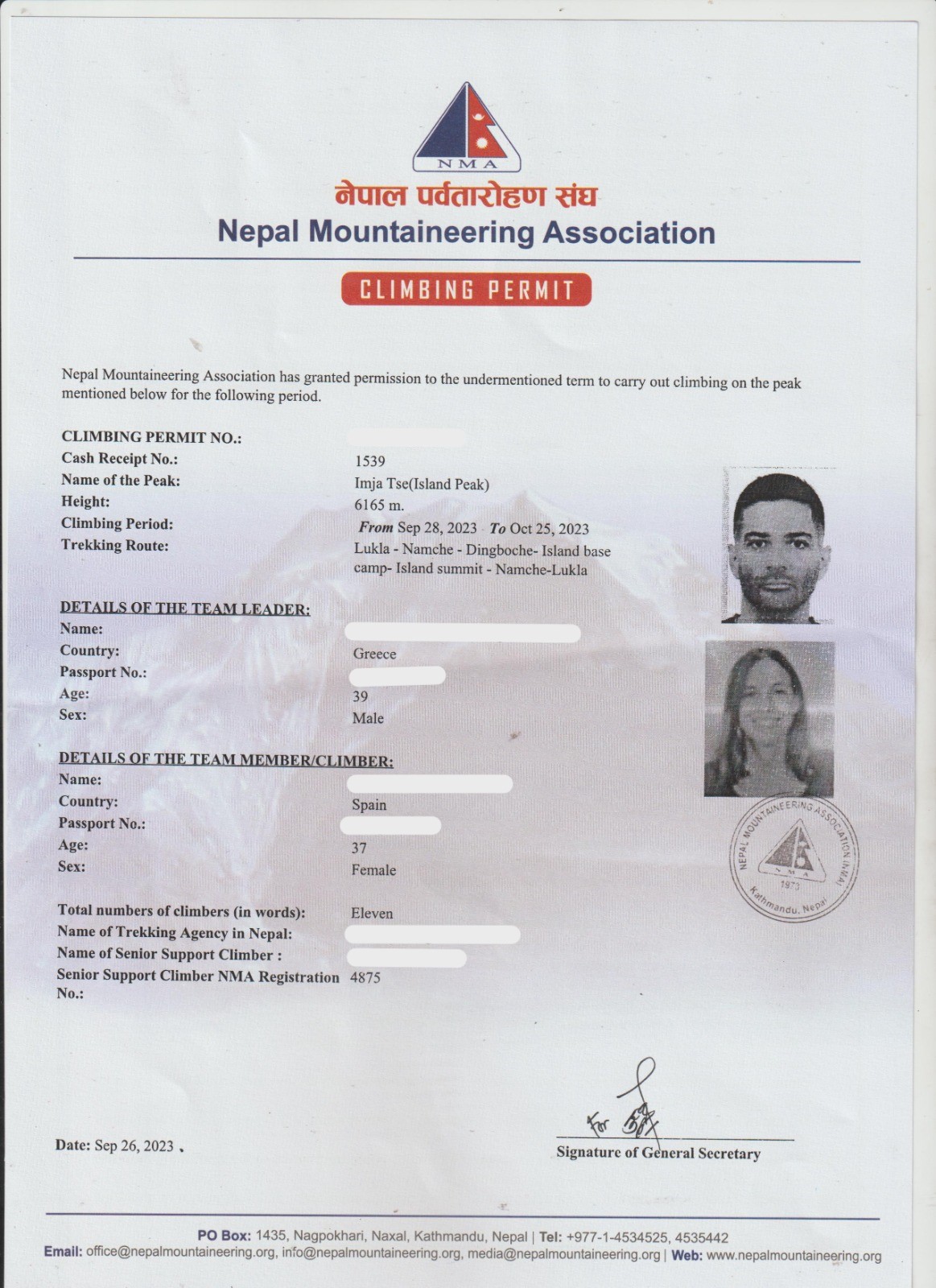
(All the permits required are included in this package).
5. Travel insurance:
Peak climbing travel insurance is a type of specialized travel insurance that protects people who embark on high-altitude mountaineering or climbing expeditions to peaks such as Island Peak or other Himalayan summits. It is required for safety and is tailored to the unique risks and challenges of high-altitude climbing adventures.
Necessary documents for Permits:
- You will only need your valid passport photocopy(validity of 6 months).
- Passport-size photos 2p.
- Travel insurance papers (includes helicopter evacuation of up to 6000m)
Highlights
- Trip Hightlight
- Climb Island Peak 6,189 m, is one of the most popular trekking peaks in Nepal.
- Visit the cultural, historical, and cultural wonders of Nepal.
- It is the best combination of Himalayan trekking and climbing.
- An easy ascent up a 6,000-meter peak for first-time climbers.
- Experience Sherpa culture and Himalayan views of 7,000 and 8,000-meter peaks
Cost Details
- Island Peak Climbing Permit.
- One climbing guide (Sherpa) among two members.
- All standard Meals (Breakfast , Lunch and Dinner) during the time climb.
- Included Garbage disposal charge.
- Accommodation in lodge during the trek and basic camping arrangement during climbing.
- A porter for every two passengers (please make your bag 15 kg and around).
- Insurance for every staff.
- Island Peak Climbing Map.
- Emergency Helicopter rescue arrangement if in case (pay by your travel insurance) in the worst case only).
- Sleeping, bag down jackets if you do not have your own, to be returned after the trip.
- First Aid Box carried by the porter.
- Medical supplies, first aid kit box, including Oximeter and pulse meter checker.
- All other government taxes and expenses
- Personal clothing, gear and climbing equipment.
- Personal accident insurance, emergency evacuation cost, oxygen, medical box.
- Alcoholic beverage, laundry and tips.
- Extra night Hotel accommodation and sightseeing tour in Kathmandu (available as per your choice)
Equipment List
Checklist for Island Peak Climbing from Chhukung
For Head
· Balaclava that covers your ears
· Headlamp with extra batteries and bulbs
· Bandana or headscarf, very useful for dusty conditions
· Beanie
· Wide brimmed sunhat
· Neck gaiter or warmer
· Snow goggles and Sunglasses with UV protection
(carry an extra pair in case you lose or break it)
· Prescription sunglasses (if required)
For Upper Body
· T-shirt (moisture absorbing and breathable)
· The thermal base layer of merino wool
· Fleece wind-stopper jacket or pullover
· Waterproof (preferably breathable fabric)
· Long sleeve shirt (moisture absorbing and breathable)
· Shell jacket
· Down Vest
· Expedition weight insulated down jacket with hood (not required for all trekking peaks )
· Gore-Tex jacket with hood, waterproof and breathable
For Hands
· A pair of lightweight poly-liner gloves or lightweight wool or fleece gloves
· Summit Mittens (warm insulated gloves with safety straps)
For Lower Body
· Lightweight thermal leggings of merino wool
· Trekking trousers (waterproof, breathable fabric)
· Hardshell trousers
· Non-cotton underwear briefs
· Hiking shorts
· Synthetic insulated pants
For Feet
· Crampons
· Lightweight inner socks, heavy poly or wool socks and cotton socks
· Running shoes and rubber sandals/flip-flops
· Double insulated climbing boots
· Good quality hiking boots (sturdy soles, water- resistant, ankle support, “broken-in”)
· Gaiters
For Sleeping Purpose
· Sleeping Bag ( a 5 season sleeping bag, suitable for temperatures for as low as -40°C)
· Foam pad
· Fleece sleeping bag liner
· Therm-a-Rest sleeping pad (NeoAir XTherm) which offers insulation and warmth in sub-freezing temperatures
· Pillowcase
Personal Climbing Gears
· Ice axe
· Crampons
· Ascender/Jhumar
· Prusik rope
· Helmet
· Harness
· Tape slings (2)
· Screwgate karabiners (2 locks, 2 unlock)
· Descender/eight figure
· Plastic mountaineering boots
Group Climbing Gears
· Snow bar
· Rope
· Ice hammer
· Ice screw
Baggages
· Rucksack and Travel Bags
· A small daypack/backpack(30-40L) for carrying your valuables should have good shoulder padding.
· Large duffel bag (80-100L)
· Small padlocks for duffel-kit bags
· Waterproof covers
Medical
· Small, personal first-aid kit (simple and light)
· Paracetamol
· Cough and/or cold medicine
· Anti-altitude sickness pills - Diamox or Acetylzolamide
· Stomach antibiotic - Ciprofloxacin, etc. Do not bring sleeping pills as they are a respiratory depressant.
· Aspirin, first-aid tape, and plasters (Band-Aids)
· Skin-blister repair kit
· Anti-diarrhea pills
· Throat lozenges
· Water purification tablets or the water filter
· Earplugs
· lip guard
· Eye drops
· Extra pair of prescription glasses, contact lens supplies
· Sunscreen
Practical Items
· Alarm clock/watch
· Camera with extra SD cards and batteries
· Large Ziploc bags
· 2 water bottles (1 liter each)
· Small roll of repair tape, sewing-repair kit
· Binoculars (optional)
· 4 large, waterproof, disposable rubbish sacks
· Socket adapter Type C (with circular pins)
· Cigarette lighter / small box of matches
· Compass or GPS(optional)
· Lightweight steel thermal bottle
· Small folding or Swiss knife
· Trekking poles(foldable)
Toiletries
· Small sachets of shampoo
· Deodorants
· Nail clippers
· Face and body moisturizer
· Female hygiene products
· Small mirror
· Medium-sized quick-drying towel
· Toothbrush/paste (preferably biodegradable)
· Multipurpose soap (preferably biodegradable)
Personal Hygiene
· Anti-bacterial handwash
· Hand sanitizer
· Pee Bottle (1 litre, leak-proof, wide mouth)
· Pee funnel (for female)
· Wet wipes (baby wipes)
· Tissue /toilet roll
Extras/Luxuries
· Reading book
· Trail map/guide book
· Journal and pen
· iPod
· Playing cards (to help you pass the time at teahouses and/or camps)
· A modest swimsuit
· Binoculars (optional)
FAQs
It typically takes 2 days—one day to reach Island Peak Base Camp and another for the summit push and return to Chhukung.
Yes, Island Peak (6,189m) has technical sections, including a 40-50° ice wall and a final ridge with fixed ropes. Prior experience with crampons, ice axes, and jumars is recommended.
Yes, you need an Island Peak climbing permit issued by the Nepal Mountaineering Association (NMA), along with a Sagarmatha National Park entry permit and a Khumbu Rural Municipality permit.
The steep headwall before the summit and altitude (6,189m) are the biggest challenges. Proper acclimatization, strong physical fitness, and basic mountaineering skills help overcome them.
No, hiring a licensed guide is mandatory as per Nepal’s trekking regulations. A guide ensures safety, helps with rope techniques, and assists in case of emergencies.


